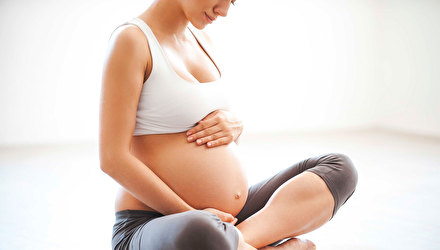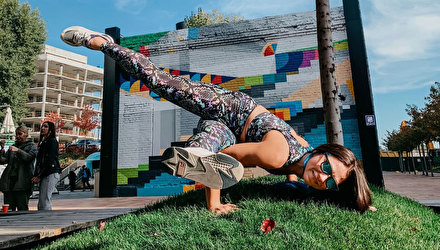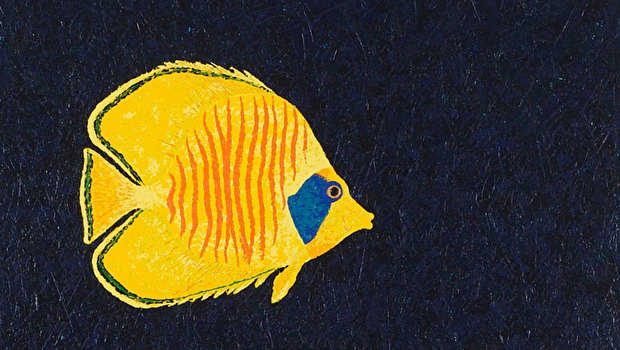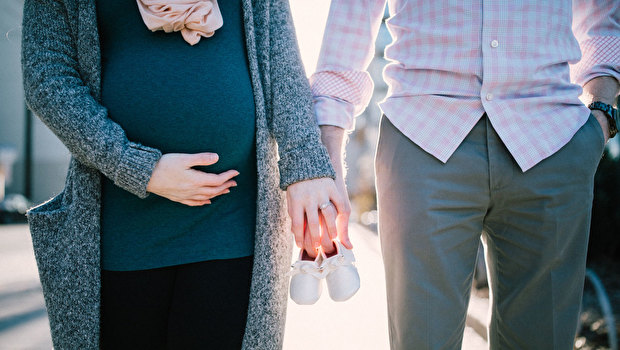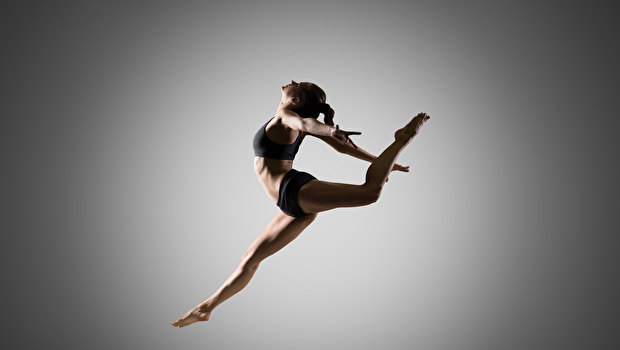Pilates is a movement system based on the principles and philosophy of its creator, Joseph Pilates. Due to its popularity all over the world, this system acquires more and more details and changes over time. This is its indisputable advantage, because. its development takes place in connection with more and more detailed and in-depth studies of the functioning of the human body by leading organizations and specialists in this field. So, in addition to the genius of the creator himself, we have an industry that has modern tools and knowledge based on the summation of the experience of previous generations and the latest research from highly respected organizations such as the Pilates Institute (London).
Pilates originates in yoga, but focuses more on the gymnastic aspect of this wise and richest, in terms of its impact on a person, teaching. However, the esoteric nature of Pilates is related to yoga by the fact that Pilates is certainly a much deeper system than just fitness, gymnastics or other type of physical activity. A system that imposes certain requirements on human consciousness and “educates a rational body”. It is impossible to perform simple, at first glance, exercises without delving deeply into the essence of the action, without making efforts to understand what is happening. Yes, of course, this occupation is not for every character. It will not work here to train muscles, scrolling through the past day in your head or falling into another “black hole of consciousness”. You can't do without fine-tuning the nervous system and immersing yourself in the sensations of yourself. The most important advantage of the Pilates system is that it is primarily aimed at developing functional and safe movement skills, and not about doing exercise for the sake of exercise. A pleasant side effect of such a workout is a purely aesthetic one - a taut silhouette, a signature Pilates belly, and relief of external muscles. Many models, actresses, singers, people associated with the aesthetics of the body, have chosen Pilates as a way to maintain (and often acquire) an attractive physical shape.
To summarize: what can we achieve? A healthy spine and a functional body, a relief and an elongated “long” shape of muscles, a surge of strength, an increase in immunity, a strengthening of the nervous system, and so on.

What won't we get? We will not lose weight, since this is not an aerobic exercise, but visually the figure will still seem slimmer due to muscle tone and corrected posture, we will avoid injuries at home and in sports because, as I mentioned above, one of the goals is to form the right movement habit . We will not get adrenaline from overexertion, working up to a seventh sweat, muscle pain (krepotura). Alas, or fortunately, there is no disco enthusiasm, as in step aerobics classes, dancers, power classes. There is no unity with the team. one of the principles of Pilates is Isolation (first of all, self-isolation or immersion in oneself), a non-competitive activity, if you look around - you lose concentration , another of the eight principles of Pilates. It is especially difficult for men. A well-conducted Pilates workout is considered to be one after which there is no feeling of hard work and fatigue, but rather the opposite - a pleasant tone, a body free from pain and physical overload, evenness of breathing. How do you feel like a hero here? Nothing but a waste of time. Unless, of course, consider the loss of time comfortable stay in your own body.
I must admit that at the dawn of my Pilates activity, I myself confidently believed that this was not for me, a rather sophisticated physical activity (classical ballet, the entire aerobic fitness set, yoga gymnastics). “This is for those whom I train, for me there is little useful here,” I thought. Plus questions from colleagues: “Do you really like it or are you kidding?” But everything has its time, and understanding too. Over time, I noticed an improvement in ballet technique. Later I learned that, it turns out, Pilates has been an integral part of the training of professional dancers and athletes abroad for decades. Far from being only rehabilitation, though certainly not a panacea. For myself, I still do yoga, sometimes ballet, but now I know for sure that Pilates has given me a new quality. The giants of the Pilates world themselves admit that today there is no universal autonomous system for training the human body. But Pilates is an unconditionally reliable base for physical activity in any direction.
In Ukraine, unfortunately, the Pilates movement is only gaining momentum. There is a certain amount of difficulty in understanding this technique. Our people are accustomed to work to exhaustion, otherwise training does not inspire confidence. In answer to my question, how is it in England? Nula Coombs, one of the founders of the Pilates Institute, responded: "We don't have people asking that question because we sold Pilates as a System and not as individual exercises." I brought this quote not only out of respect for Nula, a true Master of his craft, but rather as advice to those who want to try the Pilates technique for themselves. Accept the system, understand the rules and get a systemic result. Pilates is a long-term investment in building your body and therefore requires a thorough approach to business.
There are specific technical features, including:
- having principles
- a conscious approach to the implementation of the movement,
- dosed presentation of information,
Unaccustomed load and high demands on the ability to concentrate.
As well as long-term goals:
– development of skills for safe and efficient movement in everyday life and professional activities
– prevention and treatment of pathologies of the musculoskeletal system
- balance of the whole body system
Joseph Pilates
It is absolutely impractical to run into one class for the sake of curiosity to get an idea of what Pilates is? Apart from wasting time and disappointment, such visits in most cases lead to nothing. It makes sense to attend several classes, at least 5, before you finally tick off “we know”, “tried”. The British focus on a course of 15 lessons, which can be considered sufficient for the adaptation of a beginner. Then, watching people doing Pilates from the outside, you will not experience a dismissive doubt about the effectiveness of what is happening. And no one will take away your right after several attempts to conclude for yourself whether it suits you personally! It is quite obvious that only those actions that do not cause rejection bring benefits. If in the end, you experience irritation or negativity, then you can always find an alternative to your liking!
Next, a little more about the technique itself. She has her own philosophy. The basis of everything is the reference posture, which allows you to maintain the health of the spine, and as a result, the whole body, the entire system, if you look deeper. Posture in the Pilates system is a much broader concept than the usual association of the layman with this word. This is far from just the ability to "keep your back straight." Pilates views the posture as a dynamic form, an engineering structure of the body that moves and occupies certain positions, obeying the laws of physics, namely gravity. The human body is formed under the influence of a huge number of factors, with a correction for genetic predisposition, habitat, professional activity, habits of movement, thinking, etc. The influence of these factors is reflected in the posture, distorting the design of nature to one degree or another, which ultimately can lead to malfunctions in the body's system at all levels. Timely adjustment of such changes gives a good margin of safety, a head start over irreversible age-related changes. Exercises, which, by the way, are not so many, are the keys to solving a specific problem, and in order to maximize the effect of the impact, they must be clearly selected and no less accurately performed. Here 8 cherished principles come to the rescue: Concentration, Breathing, Center or Centering, Control, Accuracy, Smoothness of movement (speed that allows you to maintain control), Balance and Regularity (improvement of technique). Each of these principles is an equal member of the team and deserves attention. Today, there are conditionally three main Pilates schools in the world - English, American and Australian. All of them have significant differences in technique, but are unambiguously based on fundamental principles. If we talk about Pilates according to the method of the English Pilates Institute, of which I am an adherent and student, there are such unshakable concepts as the Neutral position of the lower back, even (non-aggressive) breathing and the mode of optimal tension of the muscles of the Center. The concepts of external and internal muscles, stabilizer muscles and engines, the preservation of the functions of which is largely the key to health, are inherent in all existing areas of Pilates.

Ekaterina Smirnova
The differences in techniques are based on quite understandable historical reasons. One of them is that J. Pilates did not leave direct students. Being a sharp and straightforward man, he declared that his system would die with him. Pilates left only two books, and his studio burned down in a fire, during which, by the way, he died at the age of 87 in strength and health. He had several close admirers (the Fabulous Five) who subsequently, thanks to the efforts of his wife and associate, spread the system around the world. He taught each of them in his own way, in accordance with the needs of his (the student's) own body. All of them were people of very different nature and occupation, which was appropriately reflected in the work of Pilates with each of them. At that time, Joseph did not have access to a modern information picture, obtained as a result of research conducted much later. He explained little, but had an amazing intuition, the genius of which has been scientifically confirmed and continues to be a source of material for study. In addition, J. Pilates was an inventor and experimenter until the last day. Therefore, with all the external rigidity and limitations of the Pilates technique, it is still a living, progressive and flexible system with very wide possibilities, at the same time being accessible and applicable in everyday life.
Author: Ekaterina Smirnova




